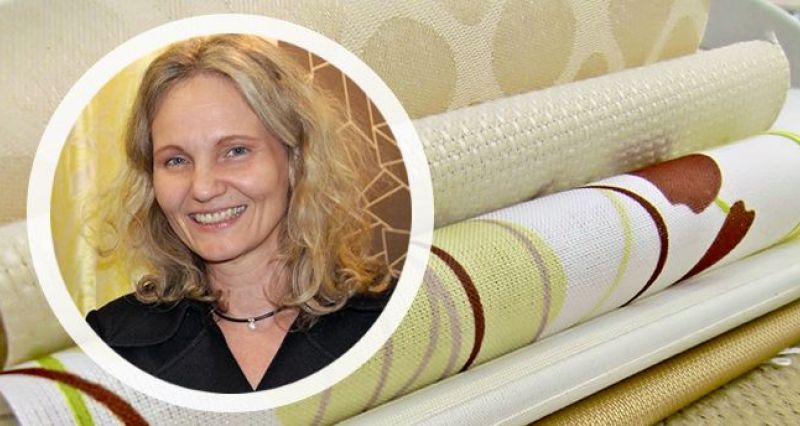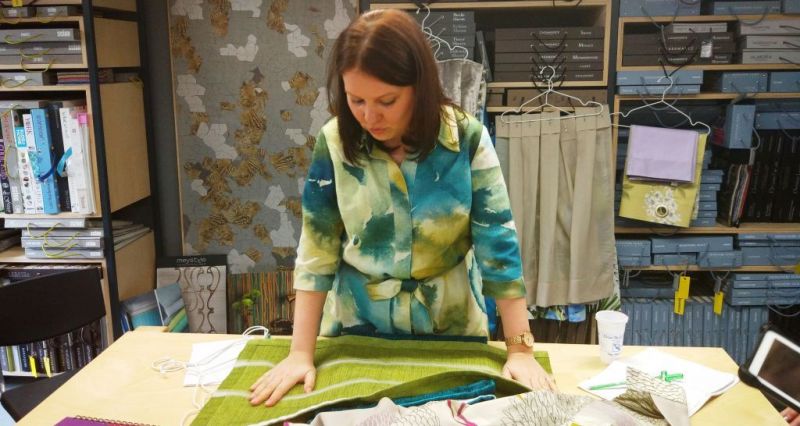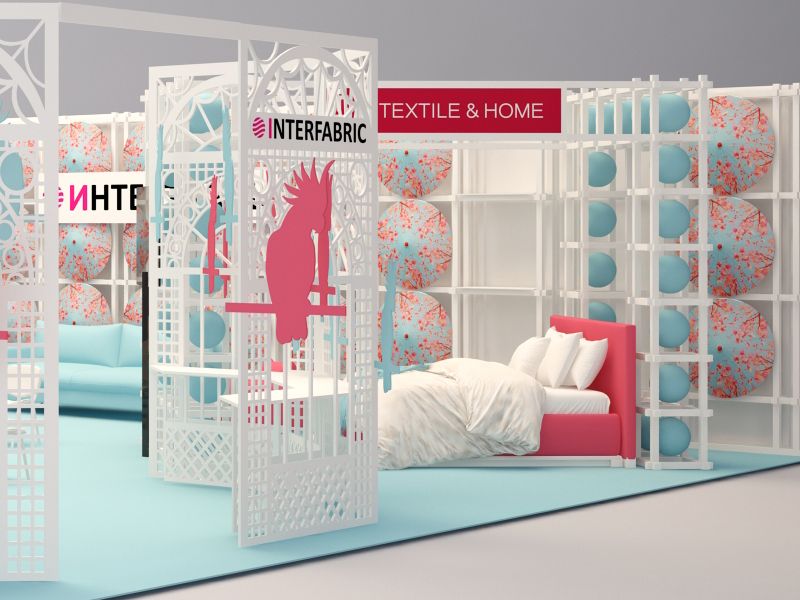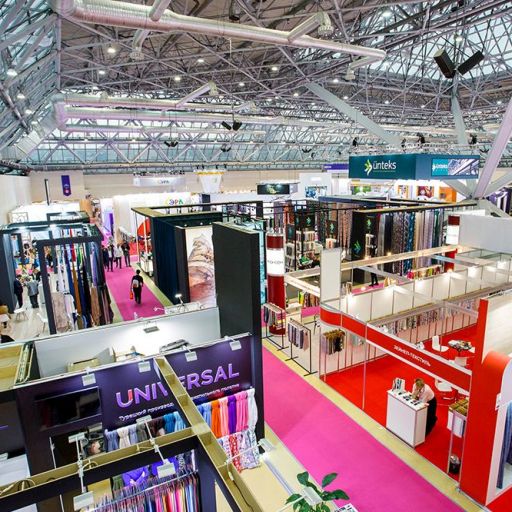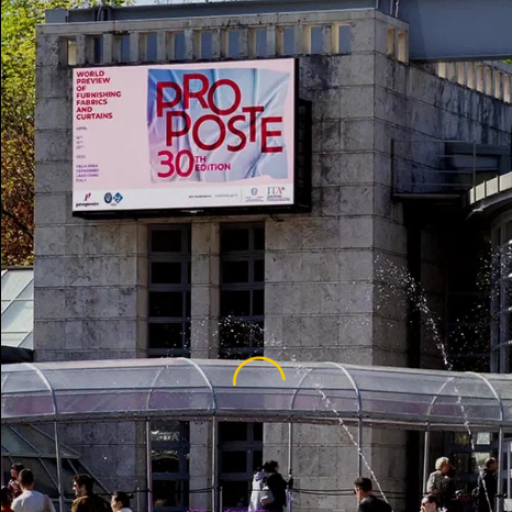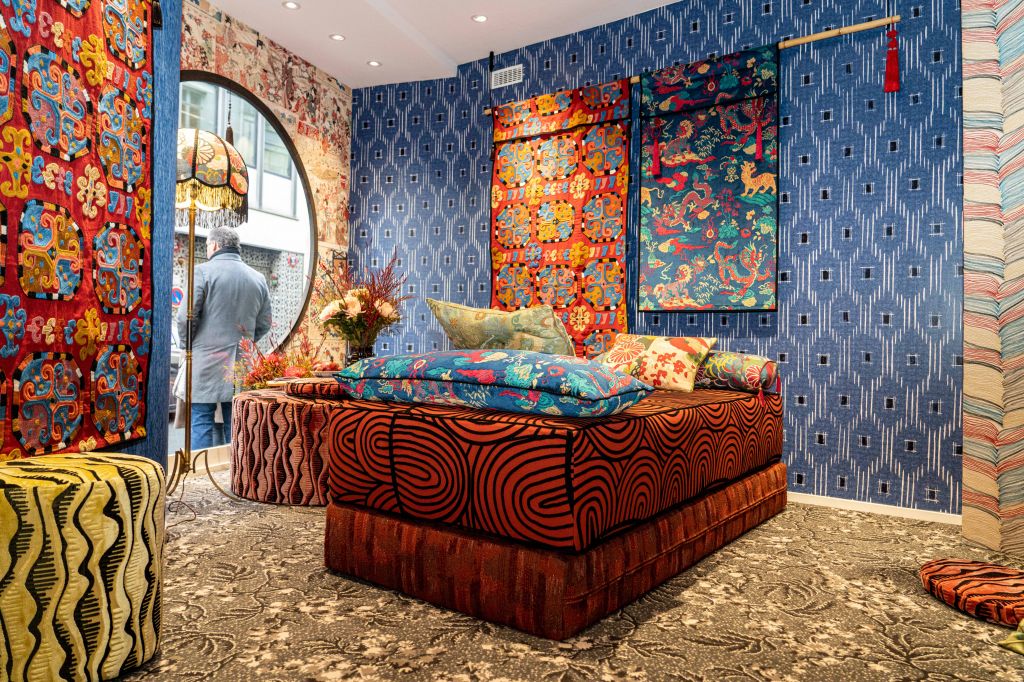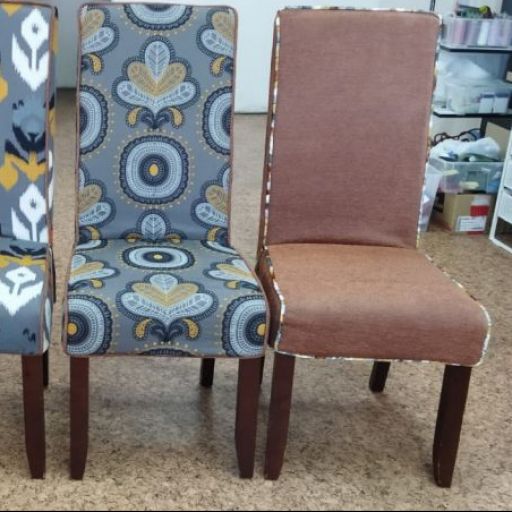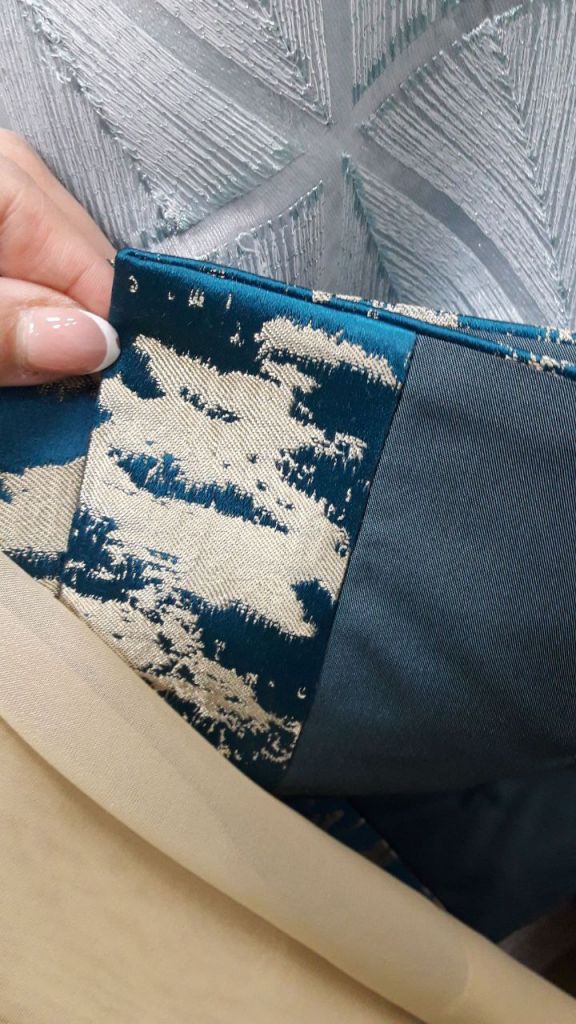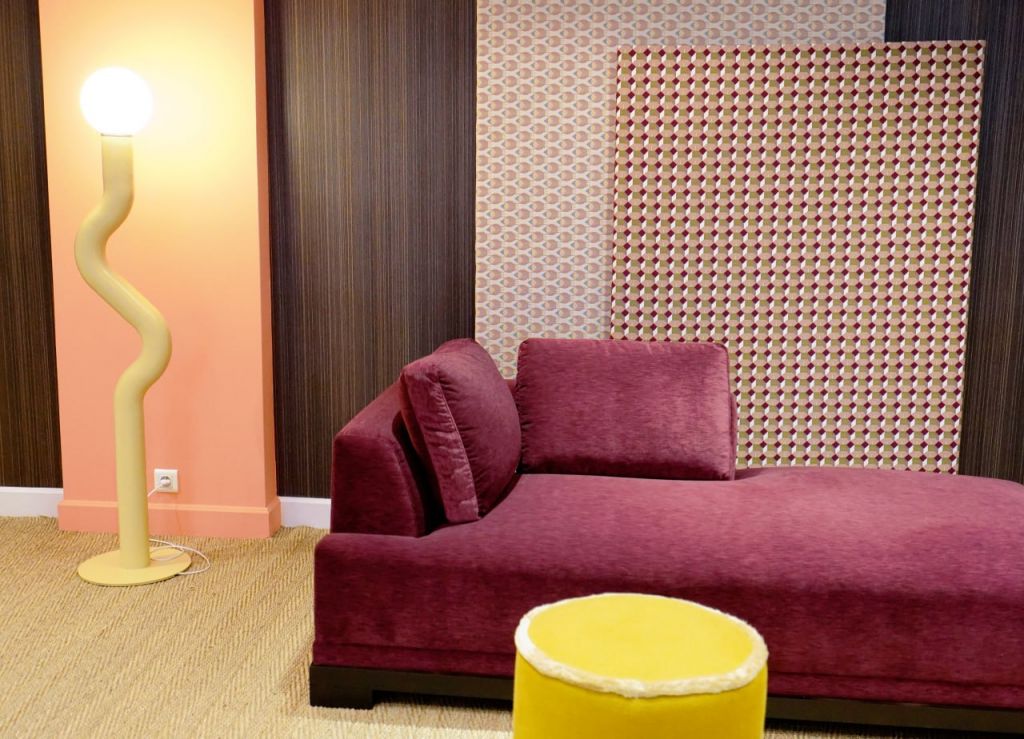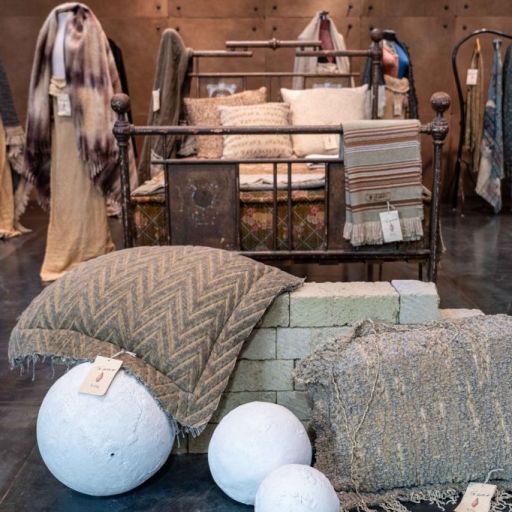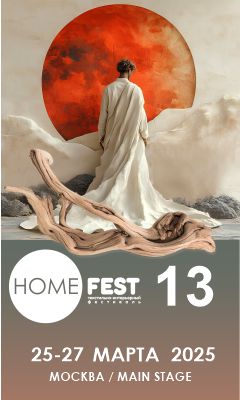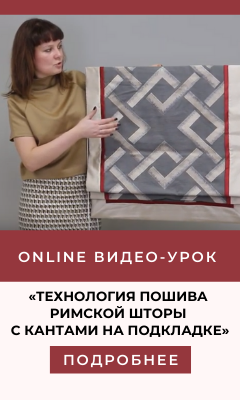INTERVIEW WITH LORI. PART II. How American decorators work, why textile is wrongly put to the second place and how to find your personal color.
19.06.2018, Про бизнес
We continue talking to American decorator Lori… In the second part of the interview we’ll discuss the peculiarities of American market, the book about colors, and what’s more important: trends or your own style.
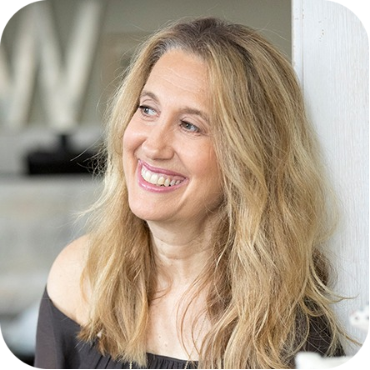
Lori Weitzner
– Let’s talk about the American textile market. What makes it different?
– One of the things I don’t like in the USA is studying of the interior design. I mean, you can get maybe one course on textiles during the entire time. That’s why American decorators aren’t experts in textiles, they have to study while working on projects. That’s really hard, but that isn’t somebody’s fault. At schools they say that’s not enough. The thing is that an interior designer has to learn so many things: lighting, CAD and all systems, that’s way too much for one course.
– But for work it is not enough.
– It is not enough, yes. I don’t know if they teach colors which is not a mandatory course, so… They get out into the field, where they all claim they’re super-talented, but they are not experts.
– In Russia they’re differentiated.
– I like it . I often say that in a way textile is a step child for the textile decorator. Do you understand what I mean?
– Yes.
– Textile is a little bit left behind. It should be and generally is the most important part of the space. In fact, I’d say it’s the soul of the space. That’s why it is very important to have experts’ opinion.
– It is very important.
– It is very important, yes. And some decorators actually involve textile experts, but not that often.
– So, in the USA an interior designer chooses collection on their own. Decorators visit different showrooms and show their new collections to clients. Do they bring samples, hangers to choose collections together with clients?
– Some decorators are experts for sure. They do love textile. That’s their favorite part. Somebody will hire a person to shop for them. But it’s very rare that there’s a textile expert. That’s why decorators often rely on the fabric company to help them to find suitable fabrics. And there’s a lot of other nuances. When we talk about your apartment – that’s one thing, and about commercial spaces like hotels – that’s completely different.
– And what about sewing? Do decorators have special companies to sew for them?
– Yes, sure. We call them workrooms and they are terrific, experts in upholstery and curtain making. But they’re not picking the fabric either. They’re doing the beautiful handwork.
– One of the things I don’t like in the USA is studying of the interior design. I mean, you can get maybe one course on textiles during the entire time. That’s why American decorators aren’t experts in textiles, they have to study while working on projects. That’s really hard, but that isn’t somebody’s fault. At schools they say that’s not enough. The thing is that an interior designer has to learn so many things: lighting, CAD and all systems, that’s way too much for one course.
– But for work it is not enough.
– It is not enough, yes. I don’t know if they teach colors which is not a mandatory course, so… They get out into the field, where they all claim they’re super-talented, but they are not experts.
– In Russia they’re differentiated.
– I like it . I often say that in a way textile is a step child for the textile decorator. Do you understand what I mean?
– Yes.
– Textile is a little bit left behind. It should be and generally is the most important part of the space. In fact, I’d say it’s the soul of the space. That’s why it is very important to have experts’ opinion.
– It is very important.
– It is very important, yes. And some decorators actually involve textile experts, but not that often.
– So, in the USA an interior designer chooses collection on their own. Decorators visit different showrooms and show their new collections to clients. Do they bring samples, hangers to choose collections together with clients?
– Some decorators are experts for sure. They do love textile. That’s their favorite part. Somebody will hire a person to shop for them. But it’s very rare that there’s a textile expert. That’s why decorators often rely on the fabric company to help them to find suitable fabrics. And there’s a lot of other nuances. When we talk about your apartment – that’s one thing, and about commercial spaces like hotels – that’s completely different.
– And what about sewing? Do decorators have special companies to sew for them?
– Yes, sure. We call them workrooms and they are terrific, experts in upholstery and curtain making. But they’re not picking the fabric either. They’re doing the beautiful handwork.
– It’s very important for company to know how different fabrics will look in drapery.
– Actually, they know. And the interior designer often relies on the workroom. They can find fabric they love, they want to work with. Decorators go to the workroom, workroom studies it and says “yes” or “no”.
– And the workroom will come to make some measures?
– Yes. They have experts and the interior designer relies on them. But they don’t pick the fabric. The choice is up to the decorator.
– So that’s the reason why you have so many editors. Because they have ready-made books and collections.
– And I think that gives the answer to the question why the USA use very plain designs, - because they just don’t know how to work with complicated ones.
– As far as I understood, American decorators also love embroidery and bright colors?
– It depends very much on the decorator, on the client, on the country. America’s big. What we sell in Florida is quite different from what we sell in New York, Chicago, Texas. That’s a big country and the tastes here are very different. So that’s really interesting. I have, for example, Weitzner fabric in wallcovering which unfortunately is not sold in Russia, by the way.
– Actually, they know. And the interior designer often relies on the workroom. They can find fabric they love, they want to work with. Decorators go to the workroom, workroom studies it and says “yes” or “no”.
– And the workroom will come to make some measures?
– Yes. They have experts and the interior designer relies on them. But they don’t pick the fabric. The choice is up to the decorator.
– So that’s the reason why you have so many editors. Because they have ready-made books and collections.
– And I think that gives the answer to the question why the USA use very plain designs, - because they just don’t know how to work with complicated ones.
– As far as I understood, American decorators also love embroidery and bright colors?
– It depends very much on the decorator, on the client, on the country. America’s big. What we sell in Florida is quite different from what we sell in New York, Chicago, Texas. That’s a big country and the tastes here are very different. So that’s really interesting. I have, for example, Weitzner fabric in wallcovering which unfortunately is not sold in Russia, by the way.
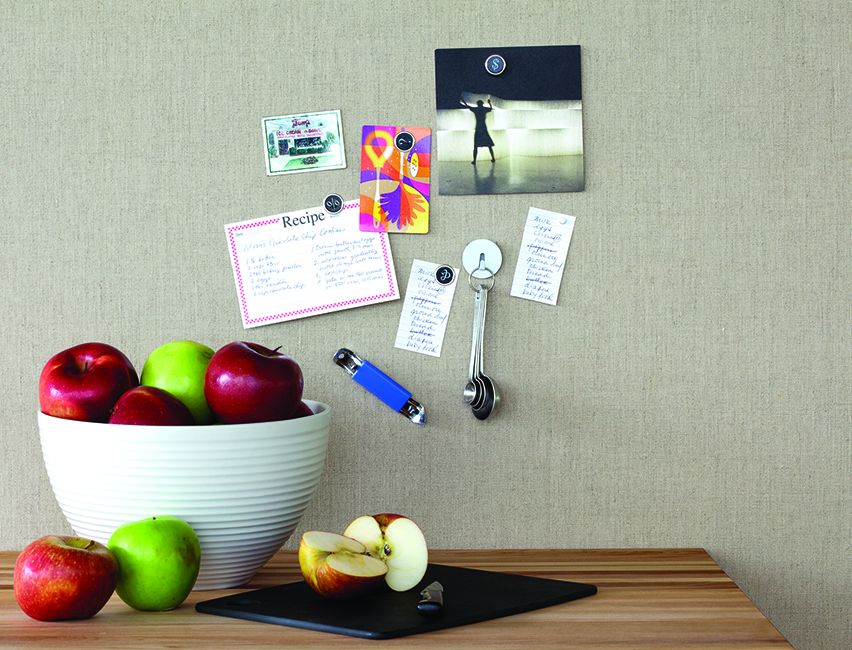
To enlarge click on photo
– You should try to find a distributor.
– Maybe, that’s not my work. But I have quite innovative wallcovering and there are two types of the decorators: those, who would use these wallcovering everywhere and those who wouldn’t use wallcovering at all.
Everybody uses fabrics, but in different ways. Someone puts emphasis on fabric pattern in the interior, some just do lining. There’s no general direction here in America. The only thing – and I’ve mentioned it before – neutral colors are always bestsellers. Every time you look at the production list – no matter what it is – the top are neutral colors. I don’t know what is the case in Russia. When we see American collections – we can see they are dominated by embroidery and really bright things.
But that’s designed basically for the upholstery, as I can see. If you ask me what I see as essential things in collections, what colors are good for everybody – the answer definitely would be neutral ones. That’s for sure. Of course, other colors are sold too, but more often people buy neutral-colored fabric. Everybody wants something special at first, but eventually…
– There are things drawing your attention and things which are good to sell, basically it’s neutral, plain colors.
– I’ve been working as a decorator for Sahco for 12 years. It is quite a different type of company and they sell completely different colors. I’d say the biggest difference between the European and the American designs is a size of a pattern. It is bigger in Europe and Europeans more often tend to take a risk in design and colors.
– I’ve always thought about the opposite. I believed Americans are riskier and they can afford bright colors, interesting patterns and ethnic clothes. American classic style is nowadays very popular in Russia. It is basically geometric patterns, embroidery, colorful dots, bright colors.
– Everything changes. But talking in general, pillows and maybe bright accents are more common. For some reason neutral colors will always be the best.
– Maybe, that’s not my work. But I have quite innovative wallcovering and there are two types of the decorators: those, who would use these wallcovering everywhere and those who wouldn’t use wallcovering at all.
Everybody uses fabrics, but in different ways. Someone puts emphasis on fabric pattern in the interior, some just do lining. There’s no general direction here in America. The only thing – and I’ve mentioned it before – neutral colors are always bestsellers. Every time you look at the production list – no matter what it is – the top are neutral colors. I don’t know what is the case in Russia. When we see American collections – we can see they are dominated by embroidery and really bright things.
But that’s designed basically for the upholstery, as I can see. If you ask me what I see as essential things in collections, what colors are good for everybody – the answer definitely would be neutral ones. That’s for sure. Of course, other colors are sold too, but more often people buy neutral-colored fabric. Everybody wants something special at first, but eventually…
– There are things drawing your attention and things which are good to sell, basically it’s neutral, plain colors.
– I’ve been working as a decorator for Sahco for 12 years. It is quite a different type of company and they sell completely different colors. I’d say the biggest difference between the European and the American designs is a size of a pattern. It is bigger in Europe and Europeans more often tend to take a risk in design and colors.
– I’ve always thought about the opposite. I believed Americans are riskier and they can afford bright colors, interesting patterns and ethnic clothes. American classic style is nowadays very popular in Russia. It is basically geometric patterns, embroidery, colorful dots, bright colors.
– Everything changes. But talking in general, pillows and maybe bright accents are more common. For some reason neutral colors will always be the best.
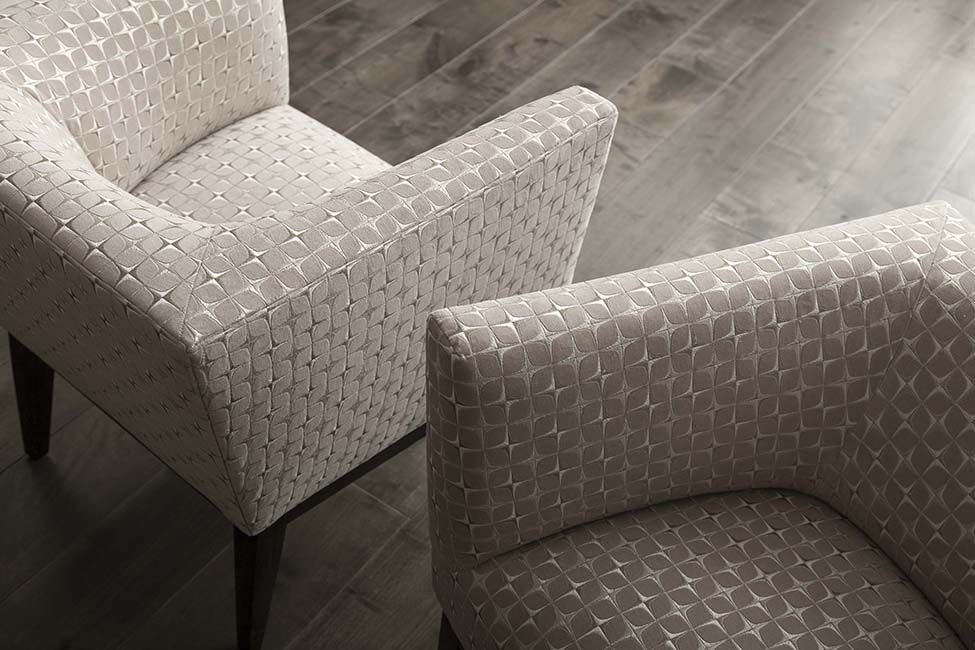
– Good idea.
– Yeah, and every time you get a new interior.
– Because changing of upholstery and window treatment is quite expensive, but changing pillows is easy.
– Yes, that’s a very good instrument.
– Yeah, and every time you get a new interior.
– Because changing of upholstery and window treatment is quite expensive, but changing pillows is easy.
– Yes, that’s a very good instrument.
– Maybe, for that reason I often see American textile companies at the Indian hall at Heimtextil – there are a lot of bright pillows and different hand work.
– Hand work is a big trend now, and we use it too.
When I’m trying to create something what is trendy now, I understand that trends come and leave. That’s why we try to bring something individual to the fashion tendencies. For example, we’re taking handmade and adding something to it, something to make it look less craft. We’re doing a lot of hand made, but our works are in Wynn and Ritz-Carlton Hotel.
We make accessories look not that hand made. When I’m walking through the Indian halls at Heimtextil – everything there looks sort of the same, sort of too…
– …ethnic?
– Yes, way too ethnic. We should change the design, but keep the quality. We should make design better. Do you know what I mean?
– Yes. I also think so. And the smell!
– If you try, you can find so many really original things. That’s amazing. But now, for example, there’s too much embroidery here, at Proposte, and it all looks the same. Yesterday I said to my decorator, Jess, we should find different way to do embroidery. We already have the idea that doesn’t look like embroidery, but that’s something you could never do with the woven.
You rarely can find something really perfect, the thing you need. But you’re thinking how you can push the technology, how you can do everything in a little bit different way, and that allows you to see the potential. Two years ago we saw an interesting embroidery technique in haut couture designs, and we had an idea how to make it better and present it in a new way. But that happened long ago and we have to move on.
– Lory, I’ve seen you published your own book “Ode to Color”. Why did you decide to write it?
– Recently I’ve learned that color was my first language, not English. It was much easier to communicate in color than language. And if we could speak only this way, I’d be very happy. I’ve realized that color isn’t just something that is beautiful or something that you like and that looks pretty.
That’s something much bigger. Color has resonance in many ways. And that’s where my book starts. Originally it was only about textile, but that was wrong. Of course, book tells about both textile and design.
– So it’s about color and textile?
– I’ve created 10 worlds, 10 different color worlds. Each of the chapter is another world. And I immerge you into 26 pages of these colorful worlds. And you learn something about the world not only through the textile or interior. There’s a lot of design tips. For example, how to use colors to make your life better. The book also has some historical connotation, poetry, fine art.
And I’m really proud of it. Maybe, that will be interesting to your readers, there’s a personal color analysis test in it.
– Yes, I’ve taken it.
– Oh, you’ve taken it? And what did you get?
– I’ve get Earthly.
–If you’re interested, I can tell you what it means.
– Yes, I’m really interested.
– We’re talking about color tendencies. My philosophy is that people are different. That’s why they need different colors. And it would be the best for you to find colors that can be the most useful in your interior. The earthly shades you have may be completely different from what I have. Actually,
I’ll get a color that can make me peaceful and calm, because I have kind of a crazy life, and when I come home I need some peace.
Earthly colors make you feel calm, but at the same time that means you’re very passionate, you live your life out on your sleeve. And these are your colors too.
– Hand work is a big trend now, and we use it too.
When I’m trying to create something what is trendy now, I understand that trends come and leave. That’s why we try to bring something individual to the fashion tendencies. For example, we’re taking handmade and adding something to it, something to make it look less craft. We’re doing a lot of hand made, but our works are in Wynn and Ritz-Carlton Hotel.
We make accessories look not that hand made. When I’m walking through the Indian halls at Heimtextil – everything there looks sort of the same, sort of too…
– …ethnic?
– Yes, way too ethnic. We should change the design, but keep the quality. We should make design better. Do you know what I mean?
– Yes. I also think so. And the smell!
– If you try, you can find so many really original things. That’s amazing. But now, for example, there’s too much embroidery here, at Proposte, and it all looks the same. Yesterday I said to my decorator, Jess, we should find different way to do embroidery. We already have the idea that doesn’t look like embroidery, but that’s something you could never do with the woven.
You rarely can find something really perfect, the thing you need. But you’re thinking how you can push the technology, how you can do everything in a little bit different way, and that allows you to see the potential. Two years ago we saw an interesting embroidery technique in haut couture designs, and we had an idea how to make it better and present it in a new way. But that happened long ago and we have to move on.
– Lory, I’ve seen you published your own book “Ode to Color”. Why did you decide to write it?
– Recently I’ve learned that color was my first language, not English. It was much easier to communicate in color than language. And if we could speak only this way, I’d be very happy. I’ve realized that color isn’t just something that is beautiful or something that you like and that looks pretty.
That’s something much bigger. Color has resonance in many ways. And that’s where my book starts. Originally it was only about textile, but that was wrong. Of course, book tells about both textile and design.
– So it’s about color and textile?
– I’ve created 10 worlds, 10 different color worlds. Each of the chapter is another world. And I immerge you into 26 pages of these colorful worlds. And you learn something about the world not only through the textile or interior. There’s a lot of design tips. For example, how to use colors to make your life better. The book also has some historical connotation, poetry, fine art.
And I’m really proud of it. Maybe, that will be interesting to your readers, there’s a personal color analysis test in it.
– Yes, I’ve taken it.
– Oh, you’ve taken it? And what did you get?
– I’ve get Earthly.
–If you’re interested, I can tell you what it means.
– Yes, I’m really interested.
– We’re talking about color tendencies. My philosophy is that people are different. That’s why they need different colors. And it would be the best for you to find colors that can be the most useful in your interior. The earthly shades you have may be completely different from what I have. Actually,
I’ll get a color that can make me peaceful and calm, because I have kind of a crazy life, and when I come home I need some peace.
Earthly colors make you feel calm, but at the same time that means you’re very passionate, you live your life out on your sleeve. And these are your colors too.
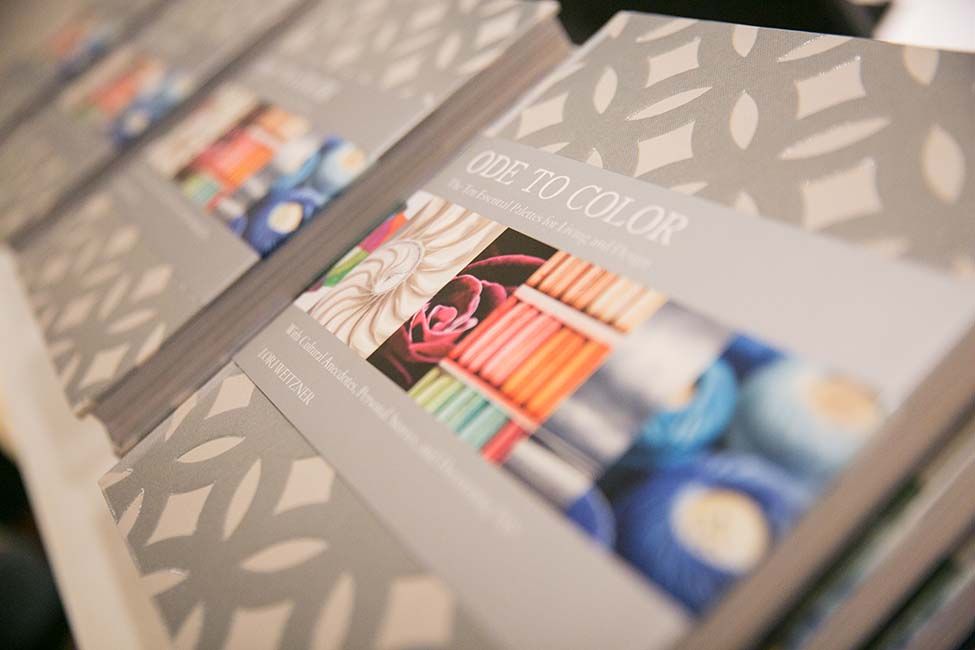
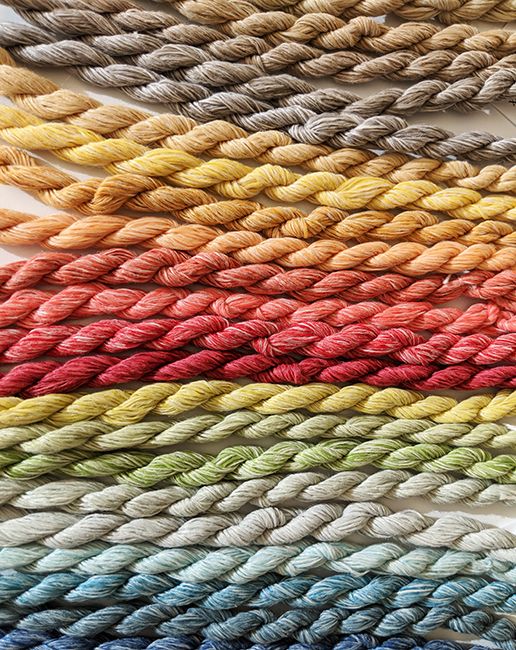
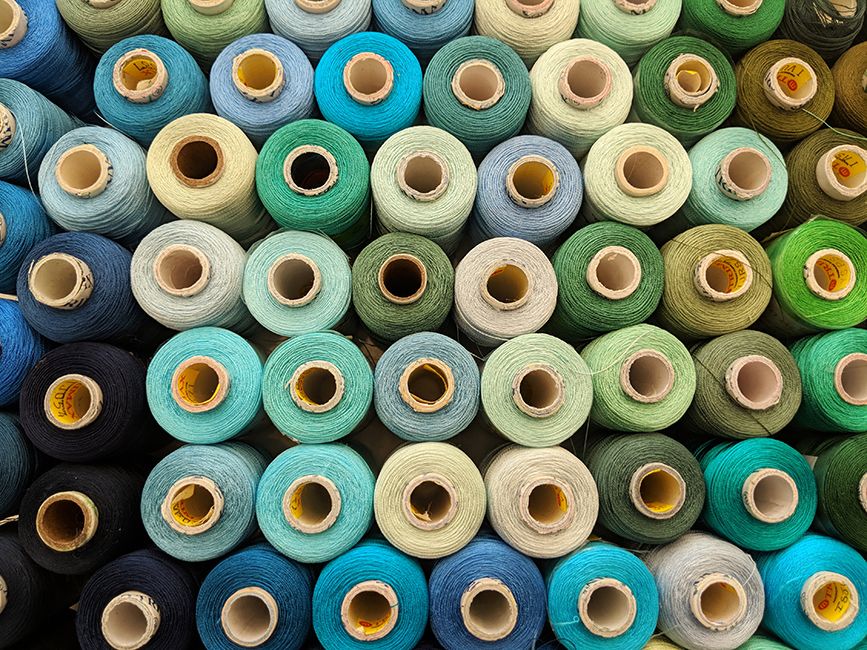
To enlarge click on photo
– That’s why I need some energetic resources at my place. For inspiration.
– Earthly may also mean fire, so have some candles. Do you like candles?
– Yes, sure.
–Or a fireplace. Do you have a fireplace? Earthly colors are the colors of cinnamon and spices, saturated colors – purple, aubergine. But that doesn’t mean the whole house has to be colored like that, only some things. And in my book I tell how you can use color in your house generally and partially.
– I’ve decided to buy your book on Amazon. It is very interesting for me to read it. When you were writing your book, you tried to understand people’s emotions, their personalities, the things they need in their lives. And what about tendencies? Do you think they make sense? Do we have to know them, follow them or it doesn’t matter? What is more important: personal taste or tendencies?
– As for the interior, I think it’s important to find colors that will work for you. That’s really interesting to follow fashion, trends, they’re not constant. Fashion is changing day by day, that’s interesting, exciting fun, that gives you energy.
You have to be able to find something that is good for you in trends and use it.
– So, we have to help our clients to find a right trend which helps them to stay in harmony?
– Yes, sure. How to find your own style? The starting point is to collect photos, pictures, seashells and whatever you like in a box or a folder. And you’ll start to see your perfect interior style. Don’t think too hard about that. In a month you’ll realize if there is any tendency in your selection. Or – if it is a diverse collection – you’ll learn what of this you need in your house.
– Great! That’s interesting.
– This philosophy is unusual for many people who see tendencies as mandatory. I believe experts should help everybody to find out what is good for them.
– I think trends have something to do with lifestyle. That’s why in all fields – fashion or interior design – we’re trying to predict the possibility to sell our products, suitable for each lifestyle, each personality and each pace and level of life.
– Yes. That’s why I would like people to ask their clients who want to decorate their house: “How do you want to feel in this space? What do you need and what you don’t like there?” Very often people choose calm colors for bedroom. But they need something to wake them up, so they want to give a little bit of energy to the interior there. We do this, using different art objects and carpets.
And then we go to the kitchen. Green is very popular in the kitchen. Why? Green’s energizing but at the same time it’s calming. That’s great to cook and to have energy for doing that and to be calm at the same time.
– Earthly may also mean fire, so have some candles. Do you like candles?
– Yes, sure.
–Or a fireplace. Do you have a fireplace? Earthly colors are the colors of cinnamon and spices, saturated colors – purple, aubergine. But that doesn’t mean the whole house has to be colored like that, only some things. And in my book I tell how you can use color in your house generally and partially.
– I’ve decided to buy your book on Amazon. It is very interesting for me to read it. When you were writing your book, you tried to understand people’s emotions, their personalities, the things they need in their lives. And what about tendencies? Do you think they make sense? Do we have to know them, follow them or it doesn’t matter? What is more important: personal taste or tendencies?
– As for the interior, I think it’s important to find colors that will work for you. That’s really interesting to follow fashion, trends, they’re not constant. Fashion is changing day by day, that’s interesting, exciting fun, that gives you energy.
You have to be able to find something that is good for you in trends and use it.
– So, we have to help our clients to find a right trend which helps them to stay in harmony?
– Yes, sure. How to find your own style? The starting point is to collect photos, pictures, seashells and whatever you like in a box or a folder. And you’ll start to see your perfect interior style. Don’t think too hard about that. In a month you’ll realize if there is any tendency in your selection. Or – if it is a diverse collection – you’ll learn what of this you need in your house.
– Great! That’s interesting.
– This philosophy is unusual for many people who see tendencies as mandatory. I believe experts should help everybody to find out what is good for them.
– I think trends have something to do with lifestyle. That’s why in all fields – fashion or interior design – we’re trying to predict the possibility to sell our products, suitable for each lifestyle, each personality and each pace and level of life.
– Yes. That’s why I would like people to ask their clients who want to decorate their house: “How do you want to feel in this space? What do you need and what you don’t like there?” Very often people choose calm colors for bedroom. But they need something to wake them up, so they want to give a little bit of energy to the interior there. We do this, using different art objects and carpets.
And then we go to the kitchen. Green is very popular in the kitchen. Why? Green’s energizing but at the same time it’s calming. That’s great to cook and to have energy for doing that and to be calm at the same time.
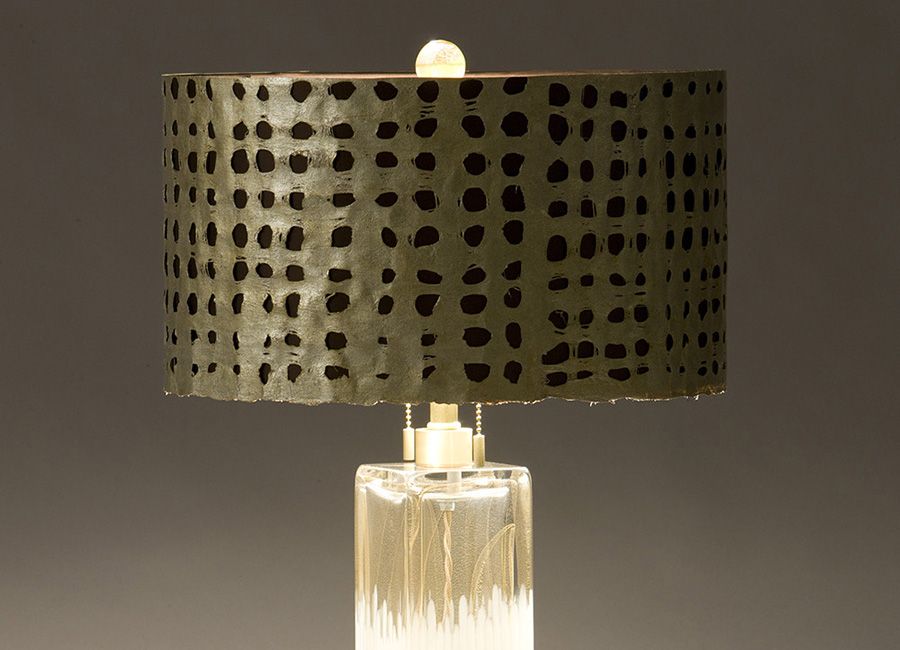
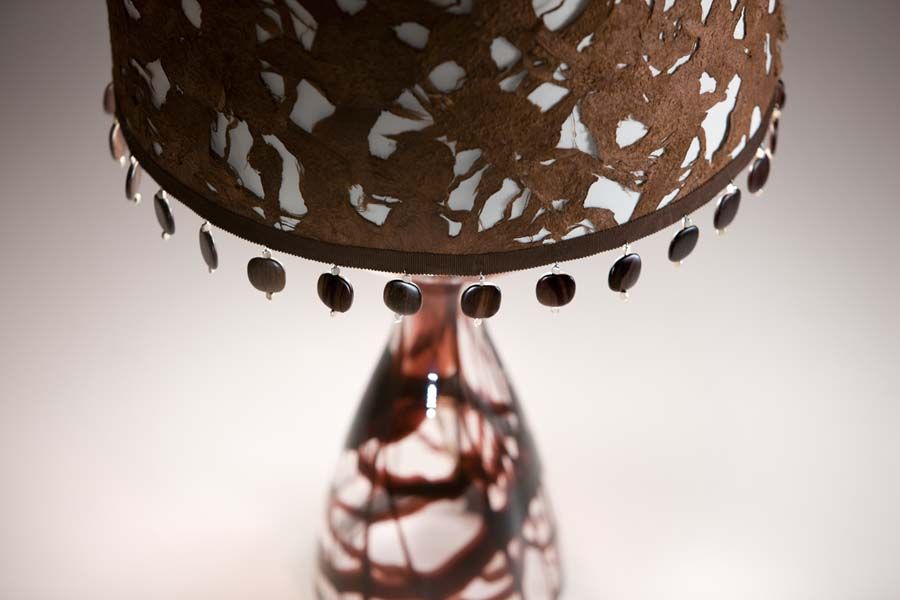
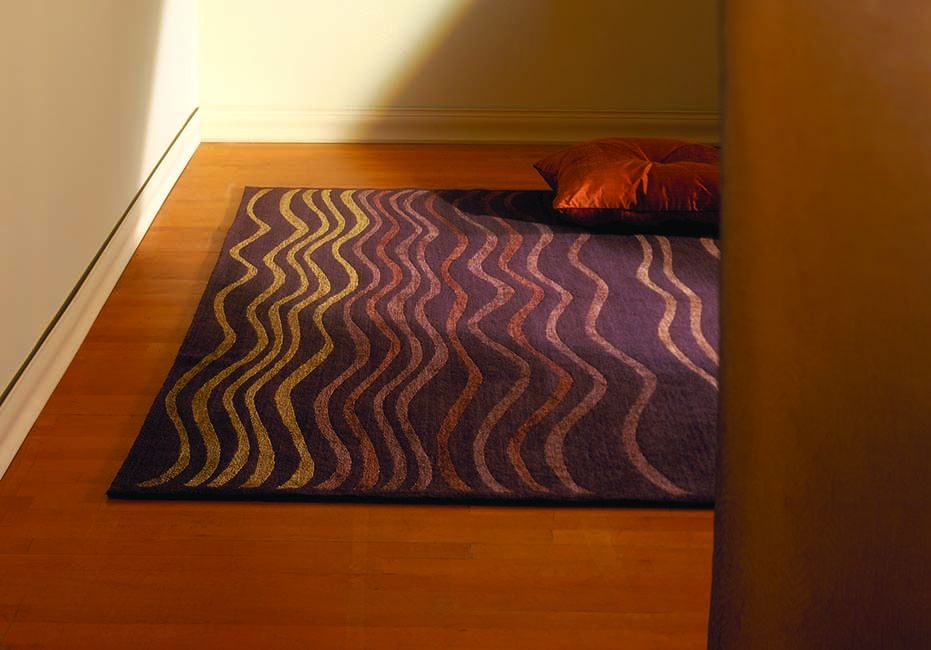
To enlarge click on photo
– So it is better to choose a specific color for each room?
– That would be great. It’s not necessary, of course, but possible.
– What do you think about the products personalization? Everything becomes more and more personal today. Why is it so important?
– Actually, that’s a great question and I was thinking about it a lot. I think that in many cases it is just a back reaction against technologies. Against this addiction because we’re all addicted to technologies.
– Yes, we just can’t live without it.
– And I don’t think this is very good for us. We’re trying to find something more human, more uniting, more individual and emotional – something that’ll help us to find ourselves. We’re not just another trend that is in and out. That’s why I think it’s a reaction to the technologies.
But all of this has also a positive side, and it’s very encouraging for me. It’s gone way too far and now the need for personalization helps us to get back to ourselves.
– That’s all because of globalization and urbanization, right? And we’re just trying to get back a little bit.
– And to find out who we are. I also think that one of the positive factors is that we can see many people all over the world, people that don’t look like us. And that gives us more confidence to be ourselves and to know that it’s ok. Whereas people before didn’t think that was ok. But now it’s great to be different, to be yourself.
– Yes, you have to be different, with your own point of view, your own style. I think that’s good. I like that trend. In the last textile collections we could see a lot of examples of collaboration with artists and using paintings and artworks for creation of textile patterns, wallcoverings and that is also something new and interesting in design.
– I think now we are inspired and put it into practice. Because for several years everything has been very plain and boring, nobody even thought about diversity. Now I see the exciting decisions again. I think, decorators have just gotten rid of their fears. And combination with hi-tech is really great.
– And unexpected.
– Unexpected materials are combined. I look for some interesting combinations of old and new ideas, or vice versa. Opposition is appearing again and I feel it can get back to us in a positive way.
– That would be great. It’s not necessary, of course, but possible.
– What do you think about the products personalization? Everything becomes more and more personal today. Why is it so important?
– Actually, that’s a great question and I was thinking about it a lot. I think that in many cases it is just a back reaction against technologies. Against this addiction because we’re all addicted to technologies.
– Yes, we just can’t live without it.
– And I don’t think this is very good for us. We’re trying to find something more human, more uniting, more individual and emotional – something that’ll help us to find ourselves. We’re not just another trend that is in and out. That’s why I think it’s a reaction to the technologies.
But all of this has also a positive side, and it’s very encouraging for me. It’s gone way too far and now the need for personalization helps us to get back to ourselves.
– That’s all because of globalization and urbanization, right? And we’re just trying to get back a little bit.
– And to find out who we are. I also think that one of the positive factors is that we can see many people all over the world, people that don’t look like us. And that gives us more confidence to be ourselves and to know that it’s ok. Whereas people before didn’t think that was ok. But now it’s great to be different, to be yourself.
– Yes, you have to be different, with your own point of view, your own style. I think that’s good. I like that trend. In the last textile collections we could see a lot of examples of collaboration with artists and using paintings and artworks for creation of textile patterns, wallcoverings and that is also something new and interesting in design.
– I think now we are inspired and put it into practice. Because for several years everything has been very plain and boring, nobody even thought about diversity. Now I see the exciting decisions again. I think, decorators have just gotten rid of their fears. And combination with hi-tech is really great.
– And unexpected.
– Unexpected materials are combined. I look for some interesting combinations of old and new ideas, or vice versa. Opposition is appearing again and I feel it can get back to us in a positive way.
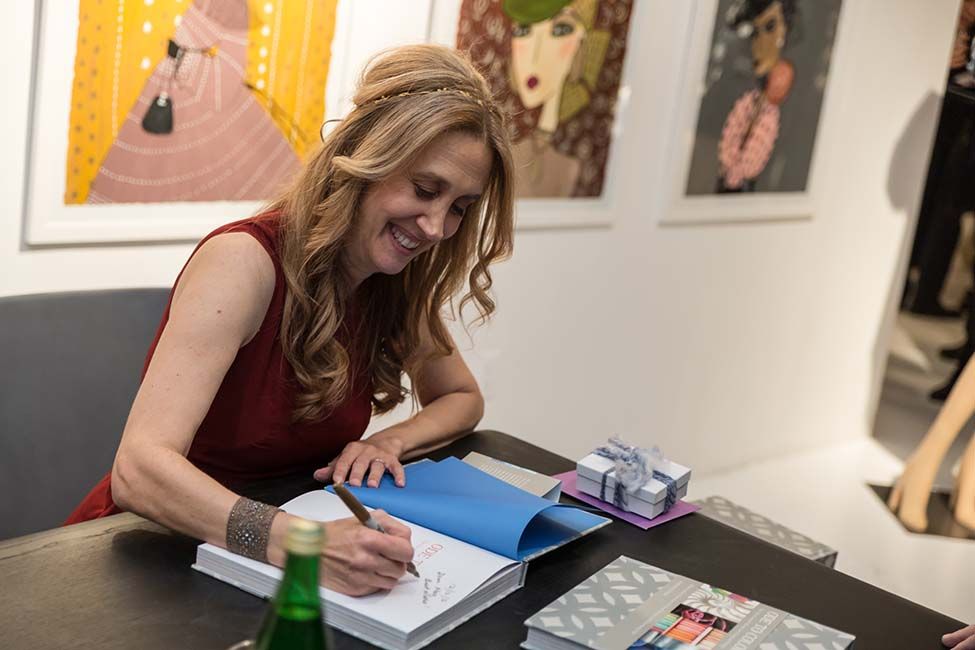
– Lory, you’re so nice!
– Thank you.
– It was so nice to meet you.
– I will send you my book.
– Thank you.
– It was so nice to meet you.
– I will send you my book.
Читайте также
Получайте полезные рассылки от WilliZ
Подписываясь на рассылку, вы подтверждаете согласие с «Соглашением на обработку персональных данных».
Получайте полезные рассылки от WilliZ
Подписываясь на рассылку, вы подтверждаете согласие с «Соглашением на обработку персональных данных».


 Русский
Русский
 English
English 
